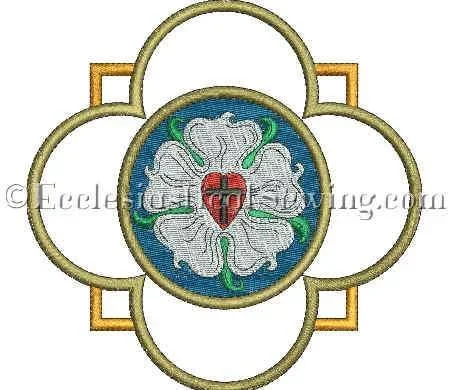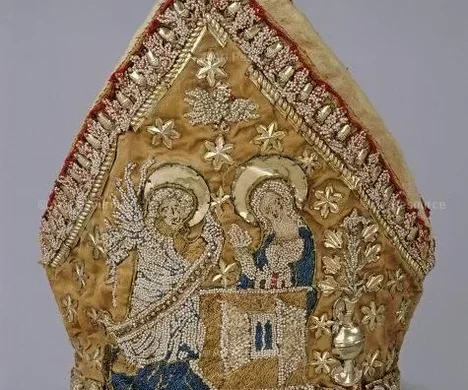
It began when Martin Luther posted his theses, sparking changes in church history. Although denominations split, they kept some traditions, like special church clothes. Ecclesiastical Sewing preserves these traditions by making church clothes for different churches. Studying church history helps us see what’s the same and what’s different. Ecclesiastical sewing is a way of making beautiful things for God.
Like this:
Like Loading...

In the thirteenth century, the papal tiara evolved with a cone shape, growing taller. The peak had an egg shape, and the bottom was adorned with a headband. Styles included vertical or crisscross bands of gold, while the cap remained white linen or cloth of gold. Gems and pearls adorned the tiara. St. Gregory is depicted wearing a thirteenth-century tiara with a vertical band, while Pope Clement IV’s tiara had crisscross bands. Clement, presenting the crown of the Two Sicilies, wore a gold tiara adorned with jewels and fleurons.
Like this:
Like Loading...

The mitre is a white linen cap that is stiffened with parchment–in the modern era, thin plastic or cardboard can be used–and placed upon a stiff linen band. This linen band is then encircled with gold and there can be at the apex a cone of gold. In this century, not only did this special cap receive a name, but the custom of the pope bestowing the mitre on his favorite bishops came into practice. In the twelfth century, the rounded top of the cap began to dip in the middle, due to the binding of a band of gold that ran from front to back.
Like this:
Like Loading...

Goldwork and stunning colors set this Annunciation design apart from many others. There is a lovely write-up and information on this Cope Hood on Needle ‘n Thread.
Like this:
Like Loading...
The Flickr photo stream might give a clue on how Ecclesiastical vestments are prepared for large events when hundreds of chasuble, mitres, dalmatics, and tunics are needed. The Stadelmaier photo stream shows the background of a vestment manufacturer making Ecclesiastical Vestments: from the Vestment Design process to final construction, the photos tell an unknown tale. The photo stream also gives a clue as to how church vestments were made in the past by including a collection of old black-and-white photos.
Like this:
Like Loading...





You must be logged in to post a comment.